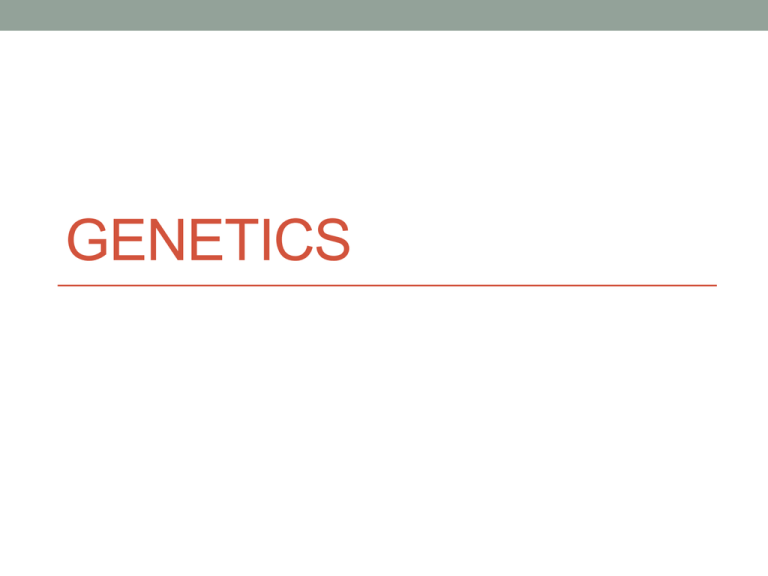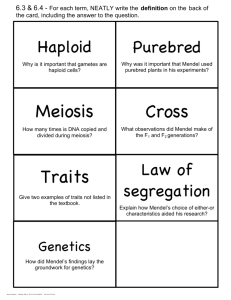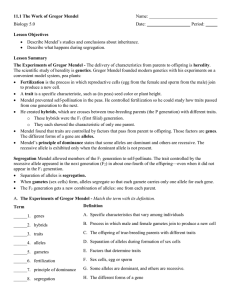Intro. to Genetic Powerpoint
advertisement

GENETICS Have you ever wondered… • How no two people have the same fingerprints? • How two brown cows can have a white calf? • Why you have green eyes when both parents have blue? • Why you can roll your tongue and your friend can’t? • These questions can all be answered through genetics, the study of heredity. Genetics • A general understanding of how heredity works has existed for a very long time. • Over 5000 years ago, Native Americans used their understanding to develop corn through a process of selective breeding. ( we’ll get back to this) Father of Genetics WHYYY?! • The foundation for genetics, as we know it today, was laid by a monk / priest named Gregor Mendel. • 1851 – Mendel began his studies on genetics through experiments with pea plants. • He observed that the pea plants had traits that were often similar to their parents. • However, sometimes the pea plants had different traits than their parents. Mendel’s Experiment • Why did the shortness trait disappear? • Why did it reappear in the next generation? The Discovery of Genes and Alleles • Mendel reasoned that individual “factors” must control the inheritance of traits. • The “factors” exist in pairs: the female contributes one and the male contributes one. • We now refer to the “factors” that control traits as genes. • The different forms of a gene are called alleles. Dominant vs. Recessive • Mendel discovered that one of the alleles can sometimes mask, or hide, the other allele just like tallness masked shortness in the peas. • A dominant allele is one whose trait always shows up in the organism when the allele is present. • Represented with a capital letter • Ex: (T) tall • A recessive allele is masked, or covered up, whenever the dominant allele is present. • Represented with a lowercase letter • ex: (t) short Dominant vs. Recessive T t TT Tt TT Tt T t T TT Tt t Tt tt T T











